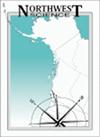爱达荷州北部河流中与亚高山蛋白存在和密度相关的非生物和生物因素
IF 0.5
4区 环境科学与生态学
Q4 ECOLOGY
引用次数: 2
摘要
石雕鱼(石雕鱼科)是一组小型非名鱼,原产于爱达荷州较冷的溪流,具有生物多样性和水质指标的价值。我们分析了来自爱达荷州北部狭长地带的115条溪流的非生物和生物数据,包括栖息地特征和共存的鳟鱼和鲑鱼(鲑科)物种的存在,以确定与鱼类存在(或不存在)和种群密度相关的溪流的物理特征和生物群落。为了进行比较,并确定北部数据集的结果是否可以归因于该州的其他地区,还分析了来自全州抽样的第二个数据集,以及两个数据集的子集,这些数据集没有观察到非本地小溪鳟鱼和虹鳟鱼。雕刻鱼更有可能出现,而且密度更高,在河流中有丰富的微栖息地,这些微栖息地大多没有沉积物(爱达荷州北部被确定为罗斯根水道B、C和F型,整个州被确定为B和C型)。在缺少鳟鱼和虹鳟鱼的溪流中也发现了更多的雕塑。了解鱼的栖息地和非本地鲑鱼的影响可能有助于解释水质评估,以及改善爱达荷州溪流的本地渔业恢复项目和渔业管理。本文章由计算机程序翻译,如有差异,请以英文原文为准。
Abiotic and Biotic Factors Associated with Sculpin Presence and Density in Northern Idaho Streams
Abstract Sculpins (family Cottidae) are a group of small nongame fishes, native to Idaho's colder streams, and have value for biodiversity and as indicators of water quality. We analyzed abiotic and biotic data, including habitat characteristics and presence of co-occurring trout and char (family Salmonidae) species, from 115 streams from the northern Idaho Panhandle to identify the physical characteristics and biotic communities of the streams associated with sculpin presence (or absence) and population density. For comparison, and to determine if the results of the northern dataset could be attributed to the rest of the state, a second dataset from state-wide sampling was also analyzed, as was a subset of both datasets that had no observations of non-native brook trout and rainbow trout. Sculpins were more likely to be present and in higher densities in streams with abundant riffle microhabitats that were mostly free of sediment (identified as Rosgen channel types B, C, and F for northern Idaho and types B and C for the entire state). More sculpins were also found in streams lacking brook trout and rainbow trout. Knowledge of sculpin habitats and the impacts of non-native salmonids may be useful in interpreting water quality evaluations, as well as in improving native fisheries restoration projects and fisheries management for Idaho streams.
求助全文
通过发布文献求助,成功后即可免费获取论文全文。
去求助
来源期刊

Northwest Science
环境科学-生态学
CiteScore
1.30
自引率
0.00%
发文量
23
审稿时长
>36 weeks
期刊介绍:
The pages of Northwest Science are open to original and fundamental research in the basic, applied, and social sciences. All submissions are refereed by at least two qualified peer reviewers. Papers are welcome from authors outside of the Pacific Northwest if the topic is suitable to our regional audience.
 求助内容:
求助内容: 应助结果提醒方式:
应助结果提醒方式:


